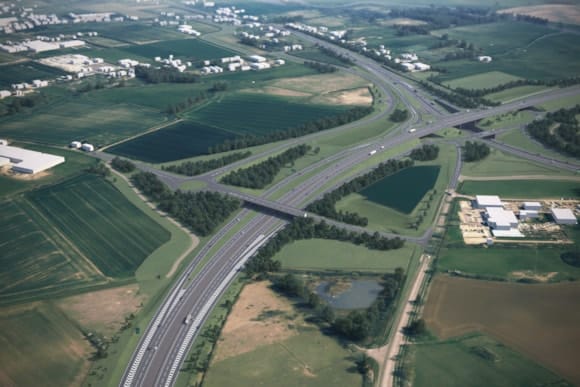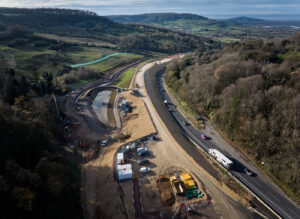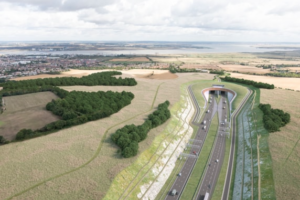National Highways will close the A421 in Bedfordshire over the first two weekends of November to install six massive steel beams for the new Roxton Road bridge, marking a major milestone on the £1 billion A428 Black Cat to Caxton Gibbet Improvements.
This scheme is designed to transform journeys between Milton Keynes, Bedford, and Cambridge, improving connectivity and reducing travel times across the region.
During the closures, specialist crews will use a 750-tonne crane to manoeuvre six massive steel beams into place over the A421. These beams will form the backbone of the new Roxton Road bridge, providing the strength and stability to safely support traffic for years to come.
Each beam is a staggering 130 tonnes in weight and 37 metres in length – approximately the same weight as a fully grown blue whale and length of a Boeing 737 aircraft.
Once the beams are securely in place, formwork will begin on the structure that will support the surface of the new bridge.
Gareth Moores, National Highways Programme Manager, said: “The scale and complexity of this engineering feat cannot be overstated and marks a significant moment for our scheme. Each beam will be carefully lifted into place – inch-by-inch – using a 750-tonne crane, forming the backbone of the new Roxton Road bridge.”
The new Roxton Road bridge is essential to accommodate the new westbound slip road and eastbound free-flow link from the A421 onto the A1. The dimensions of the current bridge cannot support these much-needed upgrades.
The £1 billion A428 scheme is National Highways largest infrastructure scheme currently under construction. It will transform journeys for thousands of drivers, cutting average travel times by up to ten minutes – a saving of up to 1.5 hours over the course of a working week.
The scheme will deliver a new 10-mile dual carriageway linking the A1 and A421 Black Cat roundabout in Bedfordshire with the A428 Caxton Gibbet roundabout in Cambridgeshire. Both roundabouts will be upgraded to modern, free-flowing junctions, vastly improving traffic flow and reducing congestion. It’s due to open in 2027.
(Picture – National Highways)























